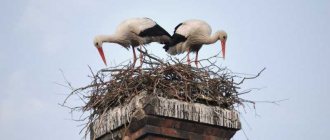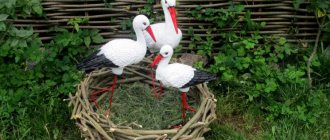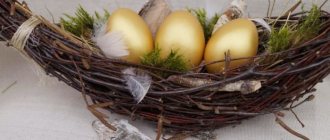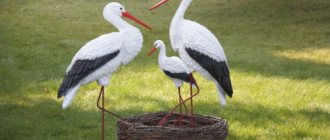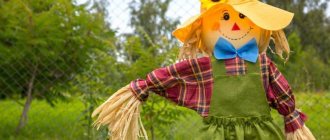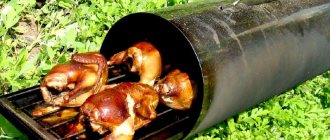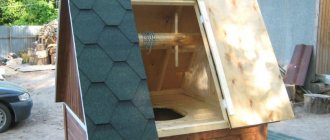Storks: description
It is typical for representatives of this genus to have long, unfeathered legs, as well as skin on the legs in the form of a characteristic mesh. These birds have a relatively long, straight, conical beak. The front fingers on the limbs, although short, are connected to each other by a wide membrane, and they are armed with pinkish claws. There may be areas of bare skin on the head and neck.
Appearance
The appearance of storks depends entirely on the species of the bird. Characteristic features are:
- Black storks are distinguished by the fact that their upper body is covered with black feathers, which give off a greenish or reddish tint, while the lower part of the body is almost white. Both thick and shaggy feathers grow on the chest, creating the appearance of a fur collar.
- The white-bellied stork has mostly black plumage, while the chest area, as well as the plumage under the wings, is white. This species of stork has red legs and a gray beak. The skin around the eyes is also red, although with the onset of mating season this color changes to blue.
- The white-necked stork has a characteristic black cap on its head, and the neck area, starting from the back of the body, is decorated with fluffy white plumage. Other parts of the body are covered mostly in black plumage, with reddish tinges in the shoulder area. The belly area, as well as the lower part of the tail, is white, while the coverts have a characteristic dark green tint.
- The Malayan woolly-necked stork has a basic black and white plumage and a red beak. The front part of the head is practically devoid of plumage, while it is painted in orange shades, and the presence of yellowish circles is clearly visible in the eye area. When the bird lives outside the breeding season, both adult and juvenile birds exhibit more modest coloring.
- American storks are distinguished mainly by their white plumage, while the tail feathers, as well as the fork-shaped tail, are colored black. This species of stork has a blue-gray beak color, and the eye area has orange-red patches of skin, and the iris of the eyes is pure white.
- White storks are characterized by a pure white plumage, with black wing tips. The neck is relatively long, as is the long, but not thick, red beak. The legs are also long, with a predominance of reddish tones in color. When the wings of a bird are folded, it gives the impression of having black tones, which is why Ukrainians call this bird “blackgut”.
Far Eastern storks are quite rare birds, while their appearance is similar to white storks, while they have a black and more powerful beak and limbs with a bright red color. In the eye area, a red edging formed by bare, unfeathered skin is clearly visible. The chicks have pure white plumage and a reddish-orange beak.
A heartwarming film about storks. Rowbicka storks. | Film Studio Aves
Character and lifestyle
The most common are white storks that inhabit low-lying meadows, preferring wetlands, and they often nest in close proximity to human settlements. They can often be seen slowly moving around the area in search of food, but when they see their prey, they quickly and deftly grab it.
Interesting to know! These birds communicate with each other using sounds produced by clicking their beaks. To do this, they throw their head back and retract their tongue into their beak. The result is a fairly loud clicking sound due to the amplifying effect of the oral cavity. Far Eastern storks are distinguished by the fact that these birds build their nests in places that are distant and inaccessible to humans, although they, like white storks, prefer to live near bodies of water, as well as near wetlands.
How long do storks live?
As a rule, the average life expectancy of these birds depends on the species, as well as the natural habitat. White storks living in natural conditions can live for a couple of decades. If these birds are kept in captivity, having organized comfortable living conditions, then these terms increase, and significantly.
Far Eastern storks, when kept in captivity, lived up to 50 years, while black storks in captivity live about 3 decades, although in natural conditions they rarely live up to 16 years.
Lifestyle
Storks always settle in damp places closer to water bodies. They live in pairs or families, fly well and are not afraid of long journeys. The structure of their body allows them to masterfully use the movement of air masses to save energy in flight.
Stork habitats
The habitat of the stork depends entirely on what specific species we are talking about. In Europe you will meet white and black storks. Moreover, they have completely different preferences. Some species have nothing against being in the vicinity of humans, but in this case they choose inaccessible high places.
Photo: kipmu.ru
Diet
Storks hunt on land, slowly walking around the area and quickly grabbing prey. They eat frogs, toads, fish, small rodents, lizards and just about anything they pass by. Some species, like marabou, can even feed on carrion.
Photo: goodfon.ru
Wintering
In Europe and Russia, storks fly away to spend the winter in the warmth. Young individuals fly away earlier, following instinct. And adult birds begin their journey only in September. In flight, storks cover enormous distances, up to 200 km per day. In Russia they return quite early, by the end of March.
Photo: pxhere.com
Finch (50 photos): description of the bird, habitat and what it eats
Types of storks with photos
The stork genus is represented by the following species of birds:
Black stork (Ciconia nigra)
This is a fairly large species of stork with an original plumage color. The height of the bird is a little more than 110 cm, and its weight reaches 3 kilograms. The wingspan of the black stork is one and a half meters.
White-bellied stork (Ciconia abdimii)
This is a relatively small bird. The length of her body is no more than 75 centimeters with a body weight of no more than 1 kilogram.
White-necked stork (Ciconia episcopus)
The body length is about 0.9 meters, so this variety is considered average compared to the others.
Malayan woolly-necked storks (Ciconia stormi)
Which is comparable in size to the white-necked stork, since it grows up to 90 centimeters in length. Considered a rare species.
American stork (Ciconia maguari)
Adults weigh around 3 and a half kilograms. Their body length is about 1 meter, and their wingspan is about 1 meter, and their wingspan is about 1m 20 cm.
White storks (Ciconia ciconia)
It is considered a fairly large wading bird, gaining weight up to 4 kilograms. The maximum height is 1 m 20 centimeters, and the wingspan is almost 2 meters.
It is important to know! The image of a stork can often be seen on the coats of arms of various cities. His presence symbolizes caution and prudence.
Far Eastern storks are not impressive in size. They are often called Black-billed or Chinese storks, and they are classified as rare birds.
Rules for making a nest
The base of the nest must be at least 1 meter in diameter. So, you can use it to take a wheel from an old bicycle or cut it out of chipboard.
Along the edges of the base you need to place some metal pins, rods or nails, which will become reliable reinforcement. It is on this that the branches and twigs will then be attached. Consider going metal-free as birds may get hurt.
Straw, branches, dry manure, lime - this is the recipe for a plausible nest. Using a small amount of diluted lime you can achieve the effect of bird droppings in a nest. This will attract long-legged guests.
A nest made entirely of willow twigs is spectacular and durable.
To secure the finished structure, you can first make a support for the base and nail it to the post. And only install and secure the nest itself on top of it.
Habitat
On European territory there are black and white storks, which are classified as migratory birds. In central Europe, these birds appear in February/March. These birds are not found in the vast expanses of England.
White-bellied storks live within the African continent, from Ethiopia to South Africa. As for white-necked storks, they can actually be found in southern Thailand; Malayan storks are found in western Malaysia and Brunei. These birds prefer to nest in biotones that are untouched by humans and represent lowlands with the presence of forest plantations. In addition, storks settle in floodplains of rivers, as well as near various fresh water bodies.
Interesting moment! Some populations of these birds are found in northern Korea, northeastern China, and also in Mongolia. These birds winter in the south, as well as in southeast China. These areas are characterized by the presence of wet areas, small ponds, and rice fields.
The habitat of American storks extends to the South American continent, starting from the expanses of Venezuela and ending with the territories of Argentina. Here they nest in damp areas, as well as near agricultural lands. Far Eastern storks prefer to live in the Far East, or rather in Primorye and the Amur region, as well as in the basins of rivers such as the Amur, Zeya and Ussuri.
Stork's nest - be careful
Stork made from plastic bottles (video)
You may also be interested in the article in which we talked about the options and nuances of making a nest for a stork yourself.
And your bird can become the founder of a whole bird family in the country. For example, a stork can open a bird gallery, but a homemade flamingo, peacock, heron will continue it... Fantasy is limitless! Some craftsmen simply paint the plywood blank and cover it with varnish. The result is a unique painting on wood, where fantasy images are combined with your own creative abilities.
Your garden will truly become a place of miracles.
What do they eat?
As a rule, the diet of storks consists of food items of animal origin. Therefore, their diet consists of:
- From small vertebrates.
- From various invertebrates.
- From frogs and toads.
- From snakes and snakes.
- From locusts and grasshoppers.
- From earthworms.
- From mole crickets and May beetles.
- From dead and sick small fish.
- From small lizards.
- From various small mammals such as mice and rats, moles, hares, ground squirrels, and prairie dogs.
- From small birds.
The diet of white-bellied storks mainly consists of locusts and caterpillars, including other larger insects. White-necked storks prefer to inhabit park areas located near bodies of water, where they hunt fish, amphibians, snakes and lizards, including invertebrate animals.
What helps storks fly for a long time
The path from Europe to Africa is not short. To cope with such a distance, you need to have certain physical characteristics. Let's consider what natural adaptations the stork has to fly for 2-3 days without getting tired:
- Body size. Large birds have no enemies in the air, and this makes their path much easier.
- Wings. Long, narrow, strong, they allow you to stay on air currents for a long time.
- The ability to doze during the flight. This fact has long been established and is beyond doubt. The duration of sleep is short, no more than 10-15 minutes, but this is enough for the bird to gain strength.
- A long-established flyway. In such a corridor, flying birds spend less energy.
- Sufficient fat reserves. Thanks to the good natural resources of their own body, storks can fly long distances in a single throw.
Young individuals, having flown to the tropics for the winter, are not always able to return home. It has been noticed that flocks of immature birds often remain to live on the African continent until they gain enough strength and until the powerful reproductive instinct speaks loudly. After 2-3 years, with the onset of spring, the birds still gather in large groups and rush to where the storks live throughout the warm period.
Reproduction and offspring
A few centuries ago, storks mainly built their nests on tall and powerful trees, while trying to be as close to human habitation as possible. The nest, for the construction of which the birds used various building materials in the form of tree branches, could weigh several tens of kilograms. Over time, the nests of these birds began to appear on the roofs of houses, as well as on other outbuildings. Nowadays, stork nests can increasingly be found on power lines, as well as at industrial facilities. These birds build nests for themselves for many years, since storks always return to their nesting sites.
The males appear first at their nest, and then, after a few days, the females appear. On our territory, these birds appear at the end of March or at the beginning of April. The first female to appear at a male's nest can become his companion for reproduction, although sometimes several females simultaneously claim this role. The male chooses a female for himself and begins to court her, making quite loud and frequent sounds with his beak. With the help of such sounds, the male meets other males who invade his living space. The male defends himself with a long and sharp beak.
The female lays several eggs, and their number depends on the type of bird. The eggs are painted white, and both parents hatch the offspring. Males mainly sit on eggs during the day, and females - at night.
The offspring are born somewhere, in a month or a little more. The chicks are born, although sighted, but absolutely helpless. In the initial stages of life, their diet mainly consists of earthworms, which are brought to the nest by their parents. Older chicks already independently grab food objects located in the beaks of their parents.
Interesting to know! In our time, the existence of the oldest stork nest is known. It was built by birds in East Germany on a high tower and served as a home for birds for centuries, from 1549 to 1930.
Adult birds care about the health of their population, so sick or weak chicks are simply thrown out of the nest by their parents. About a couple of months after birth, the offspring take wings and, together with their parents, begin to explore living space. Parents teach the skill of flight, while they continue to feed the young for another 2 or 3 weeks. The chicks become completely independent at the end of summer, after which they fly away to warm countries for the winter. This process starts in September. Upon reaching 3 years of age, storks are ready to reproduce, but they begin to independently build nests only at 6 years of age.
Family of storks – Slavsky district
Northern summer resident - News, Catalog, Consultations
White stork - what kind of amazing creature is this? Songs are written about him, but the stork himself has almost no voice; he lives with a person, but remains free; it nests in populated areas, but does not tolerate destruction of the natural environment.
From time immemorial, the white stork was a particularly revered bird among the Eastern Slavs. If the eagle owl was associated with wisdom, the magpie with talkativeness, the sparrow with pugnacity and thievery, then the white stork was a symbol of homeliness, good luck and prosperity. Childless families counted on the stork's help.
People fixed a cart wheel on the roof or on a tree - a frame for a future nest, and hoped that if storks settled in their home, a long-awaited child would be born into the family. There was also such a belief among the people: “If storks nest in the yard, there will be no fire, but God forbid that the nest be destroyed, the house will burn down!”
Are folk superstitions really that naive? Here's a real-life incident. Grandmother Maria collected last year's leaves in her yard and set a pile on fire, and the smoke drifted towards the stork's nest. The female became worried, clicked her beak and flew into the meadows. About five minutes later, the storks returned together, flapping their wings, clicking their beaks - they made such a noise that the neighbors came running. But then the wind changed and blew the smoke away from the nest. “Well, thank God, the storks turned the wind, now they will calm down,” Grandma Maria sighed with relief. That's how it happened. Oh, these complicated birds are truly magicians. But magic is magic, and if there was a real fire, storks would attract people’s attention and save them from harm. Probably, connecting storks and family well-being, our ancestors were just as close to reality. The stork will not settle in just any yard. Many generations of these birds, living next to humans, have developed special skills that provide them with relative safety. Back in the 19th century, the remarkable zoologist and popularizer of science Alfred Bram noticed that before nesting, storks spend a long time watching people - their future neighbors. Apparently, birds know how to recognize kind people. And for a good person who is in harmony with nature and the world, as you know, all matters are in dispute and the house is a full cup.
The stork family belongs to the order Cioriformes, which also includes herons and ibis. Unlike herons, most storks (except marabou) stretch their necks forward in flight. The most obvious difference between storks and ibises is their straight or almost straight beak (ibis have beaks that are curved downwards). The white stork is a large bird weighing up to 4 kg. The plumage is white, only part of the wing feathers are shiny black. The legs and beak are red, and the bare areas of skin around the eyes and on the chin are black. Storks have reduced muscles of the lower larynx, so they are almost mute - they can only click their beaks and emit a dull hiss. The closest relatives of the white one are the black and Far Eastern storks. The latter differs from ours in its black beak. Both species are very cautious and settle only in remote, undeveloped places. They are so shy that they often leave the nest as soon as they see a person.
The white stork is not like that. Previously, this species' favorite place to build nests was the thatched roofs of huts. Nowadays they don’t cover roofs with thatch, and the nest cannot survive on sloping metal or slate. Nowadays, birds roost on water towers, dead trees, sometimes on abandoned haystacks or even on power poles. The clutch of storks contains from 1 to 7 white eggs. Both partners incubate them for 33-34 days. Approximately 60 days after birth, the chicks leave the nest, and at the age of 70 days they become independent. In preparation for flying to their wintering grounds, storks gather in large flocks. They migrate at great heights in soaring flight, moving in wide circles in the desired direction. They fly primarily over land, where rising air currents are stronger. The main wintering areas are located in northern Africa and India.
Storks create their families for a long time; their pairs are constant for many years. Mutual assistance between spouses is an immutable law, and otherwise you won’t be able to feed the voracious chicks. The attachment of white storks to their nests is amazing - many have been used by birds from generation to generation for more than 100 years. Storks bravely protect their home and chicks from uninvited guests. One of the authors witnessed how a stork drove away a large bird of prey, a goshawk, from its nest. Other storks vying for the occupied place will also be in trouble - the owners will give a fitting rebuff.
The close proximity to humans, which gave the white stork a number of advantages over other large birds, has brought it a lot of trouble in the last century. The main breeding range of this species extends from Spain and eastern France to eastern Ukraine and the Smolensk region; from the Balkans and Asia Minor to Denmark and the Gulf of Finland. Within this vast territory lies the cradle of modern Western technocratic civilization and its offspring, the hyper-consumption society. Here the fruits of these socio-political phenomena were most clearly manifested: world wars with the use of powerful technologies of murder and destruction; ultra-intensive exploitation of natural resources, leading to degradation of natural ecosystems; depersonalization of ethnic groups and loss of folk traditions under the onslaught of a standardized commercial pseudoculture. All of the above directly affects white storks.
Wars and the associated destruction of populated areas have hit the white stork population hard. In 1914-1915 and 1941-1942, surviving storks, driven from their homes, were observed east of the main range, in particular in the Moscow region. Then the Moscow region became one of the places of temporary “evacuation” for storks and helped them survive the First and Second World Wars.
Although the white stork lives close to humans, it obtains food within natural or slightly disturbed ecosystems, including wetlands, meadows and copses. The basis of the stork’s diet is animal food, primarily small terrestrial vertebrates: brown and green frogs, mouse-like rodents (various types of voles), etc. Natural complexes, radically disturbed by human activity, are unsuitable for storks to live in - the birds simply cannot feed themselves there. As a result, white storks become victims of a new absurd war of “civilized” man against nature. Degradation of natural landscapes under the influence of reclamation and other forms of powerful anthropogenic pressure is apparently the main reason for the decline in the number of storks in Western Europe and the simultaneous expansion of their range to the east.
And again the Moscow region welcomes birds forced to relocate. In 1977-1981, 12 nesting attempts of white storks were noted in the Moscow region, of which 6 were successful (the birds raised chicks). In 1995, 22 nests were already registered. The number of nests in the region is increasing, but very slowly, so there is every reason to worry about the fate of the birds. Despite the fact that the white stork is listed in the Red Book of the Moscow Region, there are frequent cases of nest destruction and extermination of the birds themselves. We know that storks were killed in the village of Pavlovskaya Sloboda (Istrinsky district), in the villages of Bestuzhevo and Myshkino (Mozhaisky district); people destroyed a nest under construction in the village of Simankovo (Shakhovsky district). It is difficult to imagine a more disgusting act than deceiving a creature that has trusted you, be it a person, a stork or another creature. How else, if not a deep moral decline and complete oblivion of the traditions of our ancestors, can explain such barbarism?
Fortunately, most of our fellow citizens continue to treat white storks kindly and with care. Here is one example. Storks first settled in the village of Lukoshkino (Shakhovsky district) in 1987. A few years later, the tree on which the nest was located was blown over. Local residents secured a plank platform to a dying tree in the center of the village, although this involved some risk. The storks built a new nest on the equipped site to replace the one destroyed by the elements and use it every year.
Currently, the Verkhovye Environmental Fund (Mozhaisk), with the support of the Institute of Sustainable Communities, is implementing a project to create new specially protected natural sites in the upper Moscow River basin. It is also planned to give the status of natural monuments to the nests of the white stork. The relatively good preservation of natural and natural-anthropogenic ecosystems, the high mosaic nature of the landscape, the presence of significant areas of wetlands, meadows and copses determine the high number of small vertebrate animals - the stork’s food supply. The vast majority of the local population has preserved the historical traditions of a reverent attitude towards white storks and their nests. This attitude is fully shared by the chairmen of the regional nature protection committees of the Shakhovsky and Mozhaisky districts, E.Yu. Kabikova and Yu.A. Kovredov. All this makes Verkhnemoskvorechye extremely promising from the point of view of creating a stable core of a spreading population of white storks in the Moscow region.
Each nest needs reliable protection and close attention. In the village of Dor, on a power line pole, there is the oldest nest of white storks in the Shakhovsky district. The birds settled here in the early 80s. The villagers are concerned that there have been no chicks in the nest for the last three years. It is known that in some cases, when nesting on power lines, storks may experience a decrease in reproductive rates associated with electromagnetic influences. It is necessary to exclude the harmful effects of power lines on the nest. The head of the power transmission line operation department of Shakhovsky Mosenergo, V.I., is concerned about the fate of the storks. Krasnov and foreman of the Seredinsky electrical network section V.L. Kharkiv. After the end of the nesting season in the fall of 2000, Shakhovsky Mosenergo plans to carry out a special technical operation, as a result of which the nest will be freed from the influence of power lines.
In their legends, the ancient Slavs endowed white storks with magical powers. Nowadays, the deep content of the image of this amazing bird is being revealed more and more clearly. Together with the people, the stork experiences the hardships of war, losing nests and chicks in the flames of villages burned by the invaders. He trustingly exposes his chest to the blows and shots of nonhumans who have forgotten the covenants of their ancestors. He cannot stand human abuse of wild nature. Despite everything, the white stork, with its presence, continues to remind people of their inextricable connection with the history and nature of Russia. It seems that this bird is the winged conscience of our Motherland. They say that you can live without conscience and even without your homeland, being a “citizen of the world.” But is this life? Just as you cannot love all of humanity without paying attention to the suffering of your neighbors, you cannot advocate for the preservation of the biosphere without a blood connection with the nature of your land. Is this not what the majestic birds are silent about?
Sergey Podolsky, Alexander Rusanov, Igor Sokolov. Environmental Fund "Verkhovye"
www.povodok.ru
Stork nest
A nest for a stork in an abandoned village. In order for birds to inhabit an artificial nest, the distance to the nearest feeding grounds (meadows, swamps, pastures) should not exceed 1-2 km. The probability of settlement will increase if there are already stork nests nearby. A new nesting site must be built at least 200-300 m from existing nests so that neighbors do not quarrel. It is better to do this before the storks arrive - in autumn or early spring (until mid-April). Stork nests can be built on a roof, pole or cut tree top. Nothing should interfere with the flight of birds. Electrical wires are especially dangerous - they cause more than half of the deaths of storks. Typically, nesting boxes are built at a height of 4-10 m. The support for them must be reliable enough to support the weight of the brood (30-40 kg) and the nest, which is built up and heavier every year.
The basis for nesting can be wheels from carts and bicycles, light harrows, as well as specially made platforms made of boards, branches, poles or welded from metal rods. Such a structure should be about a meter in diameter. It is advisable to attach large nails, strips, and pegs to the edges to prevent the branches from scattering.
Making the platform is only half the job. Storks are more willing to occupy old nests than to build new ones. Therefore, it is necessary to imitate a nest built on a platform: put a layer of dry branches (20-30 cm), in the middle - a little straw, dry cow or horse manure. You can secure several bundles of brushwood on the nesting box, but do not use coarse wire (so that the birds do not injure their legs). To make the structure even more similar to an old nest covered with droppings, it is sprayed around the edges with lime.
In central Russia, white storks prefer artificial nests built on trees or poles.
Nests in trees
Nests in trees are placed on cut dry tops or at the base of a thick side branch. Branches that interfere with the approach should be trimmed around. The basis for the nesting site can be a platform knocked down from boards or an old wheel. You can make do with what is at hand. If the tree ends in a branch of several branches at the top, you can cut them off close to the fork. Meter-long sections of these branches are nailed to the remaining branches. A few more branches or boards are nailed onto the frame thus obtained, which will serve as support for the nest.
Artificial nesting structures for white storks fixed to trees
Nests on poles
You can use wood, concrete, or metal poles (such as old or defective electrical poles), firmly planted in the ground to support the weight of the nest and strong winds. It is not worth attracting storks to existing power line supports. The nesting box is nailed to a wooden post, and welded to an iron or reinforced concrete post. You can make a structure that fits onto the top of the pole.
Artificial nesting structures for white storks, mounted on poles
Nests on roofs
Roof nests are best built on a wooden deck. Two strong wooden blocks about 130 cm long are knocked crosswise to get long ends of about a meter and short ends of 30 cm. Two such crosspieces are connected by boards at a distance of about a meter. The resulting “goats” are fixed to the roof ridge. A wooden platform, a wheel, or a lattice of poles or slats is nailed to the short ends of the crosspiece.
Artificial nesting structures for the white stork, fixed to the roofs of houses.
A technique for installing nesting platforms for the black stork has also been developed. But, given the difficulty of choosing suitable places and installing a nest in the crown of a large tree, only specialists can do this
ideidetsploshad.info
Natural enemies of storks
These birds are distinguished by the fact that they do not have many natural enemies. This is due to a number of factors, such as the size of the bird, nesting in trees, etc. The fact that storks settle near human habitation also plays a huge role in preserving the population of these unique birds.
It is important to know! Experts have established one rather important fact from the life of these birds. These birds carry out sanitary cleansing of their ranks, mercilessly destroying the weak and sick of their relatives.
Despite such facts, world populations of storks are constantly declining due to human activity, as well as global climate change, which leads to the disappearance of natural habitats. Recently, there has been a steady trend towards the pollution of natural water bodies, as well as the drainage of wetlands. Such factors lead to the disappearance of various food sources for these birds, so some of them die of hunger, and some are forced to migrate in search of more comfortable living conditions. Many birds die on power lines because they like to build their nests on power poles.
Migration routes
Storks are migratory birds. In the summer they choose suitable areas in Central Europe, and with the arrival of autumn they go to winter quarters, where it is warm and they can always get food - to Africa and India.
It is interesting that adult birds and grown individuals migrate separately. At first, oddly enough, young people fly out. This happens in the last days of August. A flock of large numbers flies to where it has never been before, without straying from the right direction, without getting lost. Apparently, one thing leads them along the right course - instinct. Scientists ornithologists believe that for orientation, young birds need to determine atmospheric pressure, take into account temperature data and area lighting. It is noteworthy that the course is structured so that it passes mainly over land; birds try not to fly over the seas.
From mid-September, flocks of adult birds travel to tropical countries. The migration continues until October. Its timing depends on weather conditions. Individuals living west of the Elbe head to Africa. Populations that prefer places east of the river in summer also fly to the African continent, but settle in the eastern regions, located between Sudan and South Africa. Birds from the central part of Central Asia also fly to regions with a milder climate for the winter, but they fly not far away - to India. Some representatives of this species of birds never fly anywhere at all. Once acclimatized in South Africa, the birds never move anywhere else.
Myths and signs
Storks are such unique birds that over many centuries man has created a lot of legends, myths, speculations and superstitions that are known to us to this day. Almost everyone knows the most common legend, the essence of which is that storks bring children into the house. Among other things, with the help of storks, people manage to collect large harvests. To attract the attention of storks, people installed special devices on the roofs of their houses that made it easier for these birds to build their nests. When birds left the nest, it was believed that various troubles and misfortunes awaited the owner of the house.
Poets wrote poems about these unique birds, and composers composed music. They have become the heroes of some films and many cartoons that children love to watch.
General information about stork nests
This amazingly beautiful and noble bird builds a very large nest (up to 1.5 meters in diameter). The weight of such a home can reach 250 kg. Basically, the stork builds a nest on the roof of a structure built by man, or on broken tree tops near bodies of water (rivers and lakes) or swamps.
As a rule, one nest is used by storks for years. Birds always return to their old home, and the males arrive earlier and guard it until the female returns. But before hatching the chicks, the nest is again put in order and repaired, so its size increases every year. The height is usually 50 centimeters, and the old nest as a result of such reconstructions can reach a height of even 1.5 meters.
In Germany, the oldest stork nest has been used by birds for 381 years.
Argala
The more famous of the two representatives of this genus, the argal (L. dubius), ranging from Northern Hindustan through Eastern India to Sumatra, Java and Borneo and often found in the vicinity of large cities, appears, for example, in large flocks in Calcutta in the hot season. Previously, when the cleanliness of the city still left much to be desired, the argala at night usually sat on the roof of the governor’s house and other tall buildings in the city.
Argala stork
As a useful cleaner of street sewage, he enjoys the protection of the law in many areas, but, in addition to carrion and other garbage, he also eats reptiles, frogs and fish. This bird is also called the bald stork orderly . This bird hatches its eggs in large societies, often together with pelicans, and it is remarkable that although it has no vocal muscles and usually cracks its beak like our storks, it can nevertheless produce a cry reminiscent of the lowing of a cow.
Nest on your house
In order to install a stork haven on your roof, you will first need to make “goats”.
The procedure is as follows:
- Two wooden blocks (1.3 m each) are knocked together so that their long parts protrude by a meter, and the short ones by 0.3 m. There should be two such crosses.
- The crosspieces are fastened with a lath a meter apart from each other.
- “Goats” are placed on the roof.
- A homemade platform or a used wheel is mounted on top of the structure, which must be firmly established on the roof, tied with wire or rope.
- If you want to “decorate” a chimney with a stork house, raise it at least a meter above the chimney so that the smoke flows freely.
- Tie the pipe around the perimeter with metal pins or pegs, on which the stork’s nest will “sit.” To avoid burning it, protect it from flying sparks with an iron sheet.
Those who have brought storks into their home know that they have to pay for their proximity to them by keeping the area clean: not only droppings fly down, but also garbage, which the storks drag into their homes.
Nest on a pole
A functioning power pole is a strict no-no for bird housing.
Take those pillars that are no longer in use (made of concrete, metal or wood). They must be driven into the ground so that no storm can knock them down.
The nest can be nailed to a wooden post, or welded to a metal one.
If you want to do something more witty, make a kind of cap for the top fragment of the pillar, and place a nest on it.
House by branches
Candidate of Biological Sciences, head of the laboratory of ornithology at the Scientific and Practical Center of the National Academy of Sciences for Bioresources, Irina Samusenko,
believes that stork nests on supports are a real threat to the existence of an entire species:
- This type of nesting poses a threat to the stork population due to the increased likelihood of death from electric shock or collision with wires , as well as fires of nests or their destruction after power failures.
In addition, birds can cause these same accidents, which means power outages. This problem did not arise today; the Ministry of Natural Resources, together with the Ministry of Energy and the National Academy of Sciences, have been looking for ways to solve it for several years. There have been cases of sockets being removed by electricians during routine maintenance of high-voltage lines. You can understand the specialists, because if there is an accident on the site, a specific foreman will be responsible. Moreover, legislation on the protection and use of wildlife does not prohibit employees who maintain and repair overhead lines from removing nests outside the bird nesting period, which lasts as much as six months - from mid-February to mid-August.
Experts have already calculated: now more than 40 percent of stork nests are located on the supports of high-voltage lines. Such data were recently presented by the Scientific and Practical Center of the National Academy of Sciences for Bioresources. The situation requires a coordinated decision by interested parties, ministries and departments. The Ministry of Natural Resources and Environmental Protection even held a special meeting of all interested organizations to develop a systematic solution to preserve stork nesting sites on high-voltage lines and prevent accidents. Experts came to a consensus: an effective way to solve the problem is to install artificial platforms for stork nests on existing supports at a height of more than one meter above the wires. This facility has successfully proven itself in neighboring countries: Lithuania, Poland, Ukraine. It should be noted that in these states the platforms are placed without the requirements of technical regulations.
Ornithologists are sure: at this stage it is important to find a technical solution that will take into account the additional load of the nest on the structure of the support and wires, because over the years the weight of the stork’s “house” increases significantly. It can even reach 700 kilograms or more!
Vitaly Korenchuk, consultant, biological diversity department, Ministry of Natural Resources and Environmental Protection
, spoke about the results of negotiations between specialists:
“An agreement has already been reached that GPO Bel-Energo will ensure the development of STP “Design documentation for 0.4 and 10 kV racks for nesting birds with a platform.” This project will carry out industrial testing of vibrating and centrifuged high-voltage towers to determine the ability of the structures to withstand the additional load caused by the placement of a stork nest platform. Also, based on this standard, after its approval and implementation, a decision will be made on restoring the discarded stork nest on an existing support.
There is also an old, time-tested way to solve the problem - this is to distract birds from building nests on high-voltage lines by installing artificial platforms in villages and towns on tall trees, roofs and even special poles. This is, in fact, what our ancestors once did, hoping to settle the “bird of goodness” closer to their family nest.
